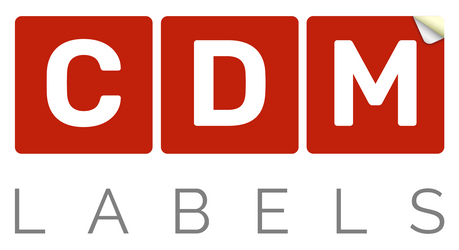Thermal Printer vs. Inkjet Printer
In today’s fast-paced business environment, the need for efficient and reliable printing solutions is paramount. Whether you are running a small office or a large industrial facility, choosing the right printer can significantly impact your daily operations. Inkjet printers and thermal printers are two of the most commonly used options, each with its own set of advantages and disadvantages. In this article, we will explore the differences between these two printer types, their typical applications, and help you make an informed decision for your business.
Understanding Inkjet Printers
What is an Inkjet Printer
Inkjet printers utilise liquid ink to produce text, graphics, and images on various types of paper. While they are prevalent in homes and small offices, industrial inkjet printers are employed by commercial printing companies to create high-quality marketing materials.
How do Inkjet Printers Work?
Inkjet printers operate by spraying thousands of tiny ink droplets onto a paper’s surface, where they combine to form an image or text. The printer’s resolution is often measured in dots per inch (DPI), indicating the number of tiny droplets that can fit within a single inch on the page. Higher DPI values result in sharper and more detailed prints, making inkjet printers ideal for producing photo-realistic images.
Advantages of Inkjet Printers
Cost-Efficiency - Inkjet printers, cartridges, and supplies are readily available and typically more affordable than their thermal counterparts, making them a cost-effective choice for many businesses.
Image Quality - Even entry-level inkjet printers can produce nearly photo-quality images, making them perfect for marketing materials and graphics-heavy documents.
Disadvantages of Inkjet Printers
Image Durability - Ink-based prints are susceptible to smudging, staining, and running when exposed to moisture, sunlight, humidity, or regular handling.
Reliability Issues - Inkjet printers often have more moving parts than thermal printers, which can increase the likelihood of breakdowns, leading to maintenance or replacement.
Exploring Thermal Printers
What is a Thermal Printer?
In contrast to inkjet printers, thermal printers employ tiny heating elements to activate or transfer pigments. Industrial thermal printers are primarily used for producing labels, safety signs, barcodes, shipping labels, and other frequently used items.
How do Thermal Printers Work?
There are two main categories of thermal printers: direct thermal printers and thermal transfer printers.
Direct Thermal Printers
Use chemically-treated paper that darkens when heated by a thermal print head. They do not require separate ink, toner, or ribbons and are commonly used for items like receipts and shipping labels.
Thermal Transfer Printers
Utilise a thermal print head to transfer solid ink from a ribbon onto label materials like vinyl, polyester, or nylon. This process results in a permanent print, ideal for labels exposed to challenging environmental conditions.
Advantages of Thermal Printers
Durability - Labels and signs created with thermal printers are highly durable and can withstand various weather conditions, making them ideal for outdoor or harsh environments.
Versatility - Thermal transfer printers can produce a wide range of labels and signs to meet various needs, including safety signs, arc flash labels, and more.
Lower Maintenance - With fewer moving parts, thermal printers tend to be more reliable and require less maintenance compared to inkjet printers.
Disadvantages of Thermal Printers
Cost - The speciality materials used in thermal printing, such as label supplies and ribbons, can be more expensive than their inkjet counterparts. Initial printer costs may also be higher.
Limited Colour Options - Thermal printers typically offer fewer colour choices, and the high heat involved limits ink options, making them unsuitable for high-quality photo printing.
Choosing the Right Printer for Your Needs
Now that we’ve examined the strengths and weaknesses of both inkjet and thermal printers, let’s discuss when each type is the best choice for your business:
Use an Inkjet Printer for:
- Basic office printing, such as contracts, manuals, and emails.
- High-quality photo printing, which thermal printers cannot replicate.
- Short-term signage, like temporary notices and announcements.
Use a Thermal Transfer Printer for:
- Durable signs and labels that must withstand extreme conditions and meet safety requirements.
- Specialised visual communication, including wire wraps, low-light signage, and more tailored to your facility’s needs.
- Floor marking to enhance safety and efficiency with custom floor marking signs.
In conclusion, choosing between an inkjet printer and a thermal printer depends on your specific business needs and the types of printing tasks you regularly undertake. Carefully evaluating the advantages and disadvantages of each can help you make an informed decision that enhances productivity and efficiency in your workplace.

